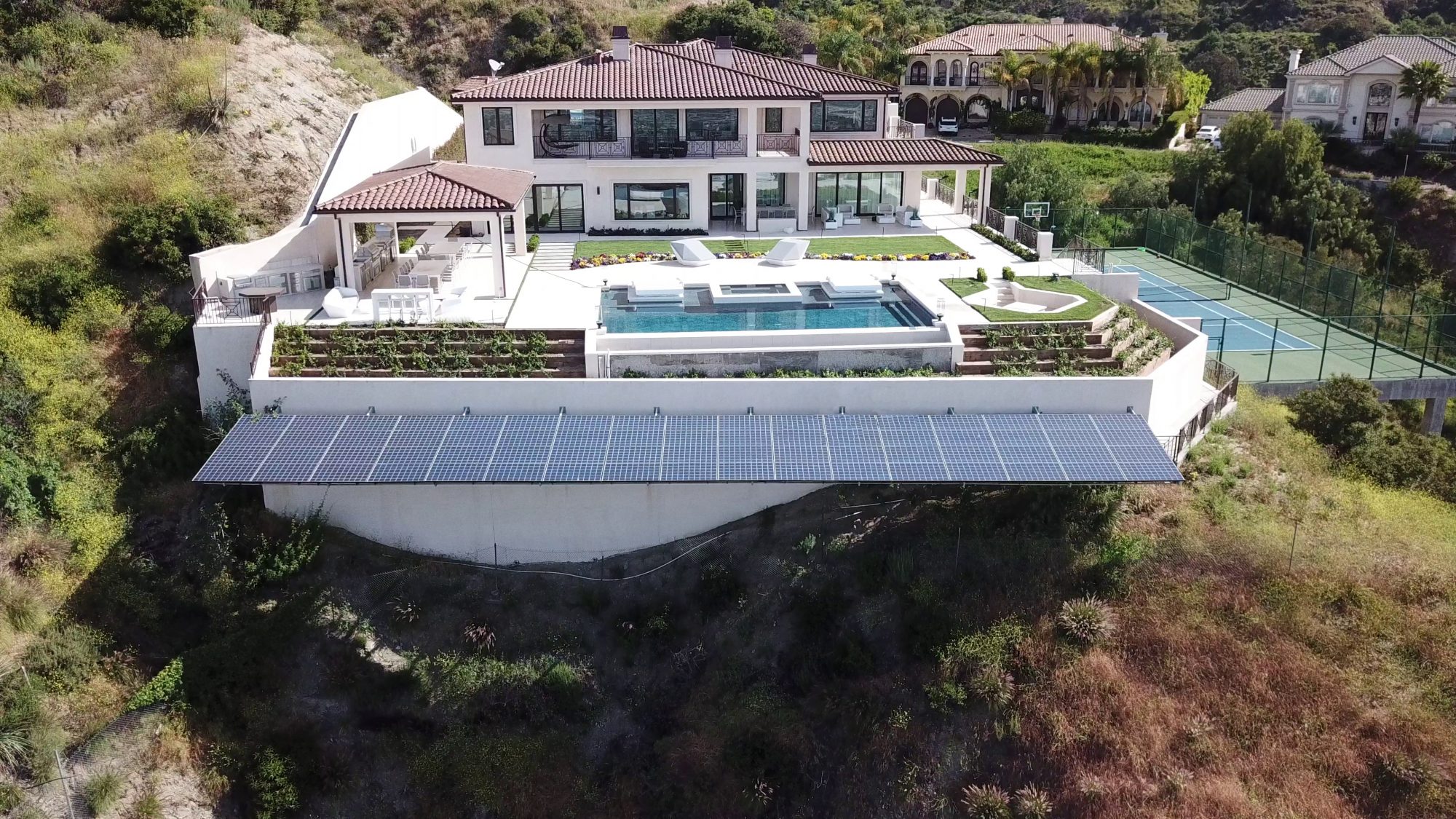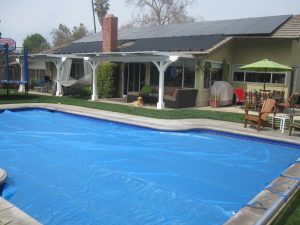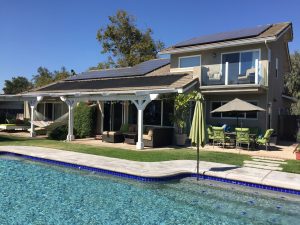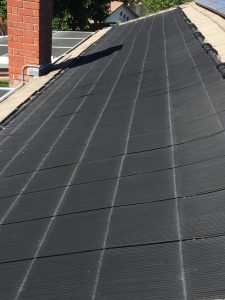
The 30% Federal Tax Credit for solar installations has been a great incentive for people to add solar power to their homes or businesses. But as they say, all good things must come to an end. This is the last year that the full 30% tax credit will be available when you add solar to your home. The tax credit decreases to 26% in 2020, then goes down to 22% in 2021. Starting in 2022, the federal tax credit disappears for residential solar.
If you were considering adding solar power to your home, now is the time to do it, while you can still take advantage of the 30% tax credit. There is an IRS safe harbor in place, and as long as you have a signed contract with a solar installer and a 5% down payment in place by December 31st of this year, you then have until January 1, 2024 to complete the solar installation and put it into service.

 by Lauren Dansey
by Lauren Dansey
 To the left you can see the rooftop solar pool heating panels on the roof, below the solar electrical (PV) panels. We used ten 4 ft. by 8 ft. Heliocol panels. They are shorter than the normal Heliocol panels, designed for roofs that don’t have room for the larger panels. Solar pool heating is the most cost-effective use of solar in your home, with a return on investment of just 2-4 years. We’re looking forward to swimming into the fall.
To the left you can see the rooftop solar pool heating panels on the roof, below the solar electrical (PV) panels. We used ten 4 ft. by 8 ft. Heliocol panels. They are shorter than the normal Heliocol panels, designed for roofs that don’t have room for the larger panels. Solar pool heating is the most cost-effective use of solar in your home, with a return on investment of just 2-4 years. We’re looking forward to swimming into the fall.